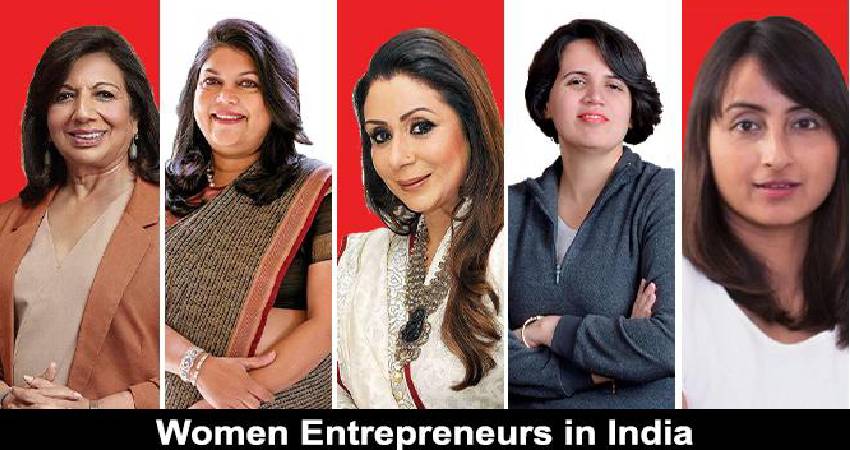The Rise of Women Entrepreneurs in India
Why Women’s Stories Matter Today
India is at a turning point. From being an agriculture-driven economy to one of the fastest-growing digital markets in the world, our nation’s development has been extraordinary. But behind the numbers and policies lies a quiet revolution: the rise of Indian women entrepreneurs.
In every corner of the country, women are starting businesses, building startups, and leading social enterprises. They are not only contributing to the GDP but also tackling issues like employment, healthcare, education, and sustainability.
Women-led entrepreneurship has become an important part of India’s national development strategy. Whether it’s government schemes, policy reforms, or private funding, India is finally acknowledging the potential of its women.
Historical Context: Women in Indian Enterprise
The idea of women as entrepreneurs is not new in India. Historically, women have always been a part of business—whether running family-owned stores, craft industries, or agricultural ventures. Yet, their contributions were often hidden behind male family members.
- In the freedom struggle era, leaders like Sarojini Naidu and Kasturba Gandhi showed women could lead movements, not just households.
- In post-independence India, pioneers like Dr. Indira Hinduja (medical entrepreneur) and Ela Bhatt (founder of SEWA) set examples of combining social impact with enterprise.
- The 1991 economic reforms and globalization opened doors for women to enter technology, finance, and consumer markets.
From being “silent contributors,” Indian women have now become visible change-makers—and their journey is deeply linked to India’s national affairs, policies, and development trajectory.
The Policy Push: How Government Enabled Women Entrepreneurship
The Indian government has played a significant role in supporting women entrepreneurs through targeted policies and financial schemes.
- Stand Up India (2016) – Encourages banks to provide loans between ₹10 lakh and ₹1 crore to women and SC/ST entrepreneurs.
- Mudra Yojana (2015) – Micro-finance loans for small businesses; over 68% beneficiaries are women.
- Startup India Initiative (2016) – Provides tax benefits, incubation, and mentorship support.
- Digital India Movement – Helped women leverage digital payments, online businesses, and e-commerce.
- Skill India Mission – Upskilling women for jobs in technology, manufacturing, and services.
According to NITI Aayog’s Women Entrepreneurship Platform, by 2025, India could have over 30 million women-owned businesses contributing significantly to employment and GDP.
Falguni Nayar: From Banker to Billionaire – The Nykaa Story
When Falguni Nayar left her secure job as an investment banker at age 50, many thought it was a risky move. But she had a vision: to create a trusted beauty and lifestyle platform for Indian women.
Founded in 2012, Nykaa grew rapidly by offering international brands, promoting Indian products, and using influencer marketing. By 2021, it became one of the first women-led companies in India to go public, making Falguni one of the wealthiest self-made women entrepreneurs in India.
Her story sends a powerful message:
- It’s never too late to start.
- A woman’s understanding of consumer needs is a powerful business advantage.
- Indian women entrepreneurs are capable of building unicorns.
This journey ties into India’s latest updates on women-led startups—how they are creating jobs, empowering employees, and setting global benchmarks.
Vineeta Singh: Sugar Cosmetics and the Bold New Indian Woman
Another story that resonates with today’s generation is that of Vineeta Singh, co-founder of Sugar Cosmetics.
After graduating from IIM Ahmedabad, she shocked everyone by rejecting a ₹1 crore job offer. Instead, she wanted to build a business that resonated with young Indian women. Sugar Cosmetics was born with a mission: make beauty products for Indian skin tones and lifestyles.
Today, Sugar competes with global brands, has a strong online and offline presence, and represents the bold, independent, and unapologetic Indian woman.
Her journey also reflects a larger cultural shift—Indian women are no longer just consumers, they are creators of brands, trends, and industries.
Neelam Gupta: Sanitary Pads and Breaking Taboos
In rural India, menstruation is still a taboo subject. Many young girls drop out of school because of lack of access to menstrual hygiene.
Neelam Gupta, a social entrepreneur, decided to change that. By producing low-cost and reusable sanitary pads, she not only created a sustainable business but also addressed a major social issue.
Her work is a reminder that entrepreneurship is not only about profit—it’s also about national development and social reform. Access to menstrual hygiene impacts education, health, and gender equality—all key to India’s growth story.
Why These Stories Matter for India’s Future
These stories are not just about individual success. They connect directly to India’s national affairs and government policy goals:
- Employment generation – Women-led startups are creating millions of jobs.
- Financial inclusion – Women entrepreneurs are helping rural families earn stable incomes.
- Social progress – Enterprises tackling issues like hygiene, education, and inclusivity.
- Global branding – Indian women-led companies like Nykaa and Biocon represent India on the world stage.
The government and media (PIB, NITI Aayog reports, India latest updates) increasingly highlight women’s contributions because they are central to achieving India’s sustainable development goals (SDGs)
Kiran Mazumdar-Shaw: The Biocon Revolution
When Kiran Mazumdar-Shaw founded Biocon in 1978 with a small rented garage and a vision, biotechnology was almost unknown in India. Banks refused her loans, and people doubted her ability as a woman to run a biotech company. But today, Biocon is India’s largest biopharmaceutical firm, exporting medicines globally.
Her contributions go far beyond business:
- Affordable Insulin: Biocon makes low-cost insulin that saves lives not only in India but also worldwide.
- Healthcare Inclusion: By focusing on affordability, she supports India’s national development policy of making healthcare accessible to all.
- Employment: Biocon employs thousands, including many women in science and research.
Kiran’s success shows how women entrepreneurs can shape India’s position in global healthcare markets. She is now one of the richest self-made women in India and a role model in every India news feature about women in business.
Richa Kar: Zivame and Smashing Social Taboos
Buying lingerie in India used to be uncomfortable and embarrassing, especially for women. Stores were male-dominated, choices were limited, and conversations around lingerie were considered taboo.
Enter Richa Kar, who founded Zivame in 2011. She faced resistance from her family and skepticism from society, but she pressed on. By building an online lingerie marketplace, she gave women privacy, choice, and confidence.
Key takeaways from her journey:
- Entrepreneurship can normalize conversations once considered shameful.
- Women entrepreneurs are best placed to solve women’s problems.
- Breaking social barriers is as powerful as breaking into new markets.
Zivame’s story highlights how Indian entrepreneurship isn’t just about business—it’s about cultural change.
Grassroots Heroes: Women in Self-Help Groups (SHGs)
While entrepreneurs in metros grab headlines, the backbone of India’s rural economy is built by women in Self-Help Groups (SHGs). Backed by the National Rural Livelihood Mission (NRLM) and local government policies, these groups are transforming lives.
Take the story of Neha Kashyap from Uttar Pradesh. With training under an SHG, she started mushroom farming with a small investment. Today, she earns ₹40,000–₹50,000 per month and mentors other women.
Or Savita from Maharashtra, who runs a dairy cooperative with other women, ensuring steady income for her village.
These women may not be featured in national news daily, but their impact is critical to India’s national development strategy:
- Empowering women financially.
- Reducing poverty in rural households.
- Increasing participation of women in the economy.
According to government data, over 7 crore Indian women are part of SHGs. This is grassroots entrepreneurship at scale—women helping women build sustainable businesses.
Challenges Women Entrepreneurs Still Face
Despite success stories, women in India still face multiple hurdles:
- Access to Finance: A study by Bain & Company found that only 2% of VC funding in India goes to women-led startups.
- Social Expectations: Balancing home responsibilities with business remains a challenge.
- Safety and Mobility: In rural areas, women face restrictions on travel and exposure.
- Digital Divide: While urban women benefit from digital tools, many rural women lack smartphones or internet access.
- Policy Awareness: Many schemes exist, but women in small towns are unaware or unable to apply.
This shows that while India celebrates success stories in media and national affairs, policy implementation and awareness remain a challenge.
Government Policies Driving Change
The Indian government recognizes that empowering women entrepreneurs is critical to national growth. Key initiatives include:
- Stand Up India: Provides loans between ₹10 lakh and ₹1 crore for women-led businesses.
- Mudra Yojana: Offers micro-loans for small-scale women entrepreneurs. Over 68% of Mudra loan beneficiaries are women.
- Startup India Seed Fund: Provides financial support and mentorship for startups.
- Mahila E-Haat: A digital marketing platform for women entrepreneurs to sell products online.
- NITI Aayog’s Women Entrepreneurship Platform (WEP): A resource hub connecting women with investors, mentors, and opportunities.
These policies are often highlighted in India latest updates and government releases because they are part of India’s long-term economic development strategy.
Data That Proves the Impact
- According to a NITI Aayog report, India has around 13.5–15.7 million women-owned enterprises, representing 20% of all enterprises in India.
- By 2030, women entrepreneurs could generate over 150–170 million jobs, more than any other sector.
- A World Bank study highlights that financial inclusion of women directly improves GDP growth and poverty reduction.
These facts highlight why the government, investors, and media must continue to support women-led businesses.
Why Women Entrepreneurs Are National Assets
Women-led businesses are not just personal achievements. They play a strategic role in India’s development:
- Driving Employment: From Nykaa to mushroom farms, they create jobs.
- Promoting Inclusivity: Women founders often prioritize gender-balanced workplaces.
- Filling Market Gaps: Many solve problems (like menstrual hygiene or lingerie shopping) ignored by male-dominated industries.
- Boosting India’s Global Image: Women-led unicorns showcase India’s innovation worldwide.
These outcomes align with India’s sustainable development goals (SDGs) and national affairs priorities.
India on the Global Stage: Women Entrepreneurs as Changemakers
In the last decade, Indian women entrepreneurs have not only excelled domestically but have also gained international recognition. They are being celebrated at global forums like WEF (World Economic Forum), UN Summits, and Forbes Women Leadership Conferences. Their rise reflects not just personal achievements but also the strength of India’s evolving entrepreneurial ecosystem.
- Forbes Billionaires List: Falguni Nayar (Nykaa) became India’s wealthiest self-made woman billionaire in 2021.
- Global Tech Recognition: Indian-origin women like Neha Narkhede (Confluent) and Indra Nooyi (PepsiCo’s former CEO) symbolize how Indian women can compete and lead globally.
- Sustainable Business Leadership: Women like Shahnaz Husain, who pioneered organic beauty products, are known worldwide for blending Indian traditions with modern business.
India’s presence on the global entrepreneurial map is now stronger than ever because of these women. Their achievements reflect not just personal grit but also India’s growing influence in the knowledge economy.
Future Trends in Women Entrepreneurship in India
As India advances toward becoming a $5 trillion economy, women will play a decisive role. Emerging trends show that the future of Indian entrepreneurship will be powered by women-led businesses in multiple sectors:
- Digital Entrepreneurship: With the expansion of UPI, e-commerce, and fintech, women are increasingly running businesses online. Social commerce is empowering housewives to sell products from home.
- Green Startups: Women are taking the lead in sustainable ventures—organic farming, eco-friendly packaging, and renewable energy startups.
- Healthcare & Wellness: Post-COVID, women-led startups in telemedicine, mental health apps, and holistic wellness are scaling rapidly.
- Ed-Tech & Skill Platforms: Many women are founding education technology startups focusing on personalized learning, vocational training, and women’s financial literacy.
- Artisanal & Cultural Revival: Women entrepreneurs are driving revival of Indian crafts, from Banarasi sarees to tribal jewelry, making them accessible globally via online platforms.
This transition is also backed by government policies such as Startup India 2.0, Women Self-Help Group (SHG) support programs, and NITI Aayog’s Atal Innovation Mission.
Case Study: Digital India & Women Empowerment
The Digital India initiative has played a transformative role. Internet access has given women the ability to:
- Run Instagram boutiques, food blogs, YouTube channels, and become influencers.
- Manage e-commerce stores from rural towns without leaving their homes.
- Access government portals for funding, legal advice, and mentorship.
Example: In Uttar Pradesh, a group of women weavers started selling handloom sarees through WhatsApp groups. Within two years, they expanded sales internationally via Amazon Saheli. This micro-story shows how digital connectivity can erase geographical disadvantages.
Women Entrepreneurs & National Development
Women entrepreneurs contribute directly to India’s GDP, job creation, and social equity. According to NITI Aayog reports, women-led enterprises could add nearly 150–170 million jobs by 2030, making them a cornerstone of India’s economic future.
Key contributions include:
- Boosting Employment: Most women-led startups hire other women, creating inclusive workplaces.
- Reducing Poverty: Rural women’s enterprises generate additional household income, uplifting entire communities.
- Education & Health: Profits from women-owned businesses often go into children’s education and better healthcare facilities.
- Innovation for Social Change: Women-led startups often focus on problems like sanitation, menstrual health, rural education, and eco-friendly housing.
Thus, empowering women is directly tied to national affairs and development policy.
Barriers to Overcome: The Next Big Challenges
While progress is visible, India still faces structural and cultural barriers that must be dismantled:
- Low Representation in Venture Capital: Less than 5% of VC funding in India goes to women-led startups.
- Gender Bias in Business Networks: Male-dominated boards often underestimate women entrepreneurs.
- Safety Concerns: Lack of safe transportation and workplace security in smaller towns still discourage women from scaling businesses.
- Uneven Digital Literacy: Millions of women still lack access to smartphones, internet, or business apps.
These gaps highlight the urgency of stronger government interventions and private-sector inclusion policies.
Roadmap for a Gender-Inclusive Entrepreneurial Future
For India to lead the world in women entrepreneurship, a multi-dimensional roadmap must be followed:
- Policy-Level Changes
- Simplified loan processes with no collateral requirements for women.
- Tax incentives for investors backing women-led startups.
- More government-sponsored incubators for women.
- Education & Skill Development
- Introducing entrepreneurship curriculum for girls in schools.
- Digital skill programs in villages under Skill India & Digital India.
- Training women in financial literacy and investment.
- Industry & Corporate Sector
- More CSR projects dedicated to women entrepreneurship.
- Corporate mentorship networks connecting women with industry leaders.
- Gender-parity hiring practices supporting women in leadership roles.
- Societal Shifts
- Media campaigns to normalize women entrepreneurs.
- Promoting success stories in schools and colleges.
- Families encouraging daughters to pursue entrepreneurial careers.
- Global Collaborations
- Partnerships with UN Women, World Bank, and G20 on women empowerment initiatives.
- Exchange programs for Indian women entrepreneurs to learn from global markets.
Actionable Guidance for Readers
- Students: Start side hustles, internships, and skill-based learning early.
- Professionals: Support women-led ventures, provide mentorship, and invest in gender-inclusive businesses.
- Entrepreneurs: Use government portals like WEP, Startup India Hub, and MSME schemes for growth.
- Policymakers: Strengthen enforcement of gender equality across funding, training, and digital infrastructure.
- Readers: Share women-led business stories to amplify their impact.
The inspiring journeys of Indian women entrepreneurs are shaping a new India—resilient, innovative, and inclusive. From metros to villages, women are breaking barriers, rewriting cultural narratives, and creating businesses that not only generate wealth but also contribute to national development.
The future of Indian entrepreneurship is undoubtedly female-driven, and with the right policies, mentorship, and societal support, India can lead the world as a champion of gender-inclusive economic growth.









